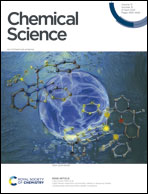An efficient factor for fast screening of high-performance two-dimensional metal–organic frameworks towards catalyzing the oxygen evolution reaction†
Abstract
Two-dimensional (2D) metal–organic frameworks (MOFs) are promising materials for catalyzing the oxygen evolution reaction (OER) due to their abundant exposed active sites and high specific surface area. However, how to rapidly screen out highly-active 2D MOFs from numerous candidates is still a great challenge. Herein, based on the high-throughput density functional theory (DFT) calculations for 20 kinds of different transition metal-based MOFs, we propose a factor for fast screening of 2D MOFs for the OER under alkaline conditions (pH = 14.0), that is, when the Gibbs free energy change of the O–O bond formation (defined as ΔG1) is located at ∼1.15 eV, the peak OER performance would be achieved. Based on the high-throughput calculation results, the prediction factor can be further simplified by replacing the Gibbs free energy with the sum of the associated single point energy (SPE) and a binding energy-dependent term. Guided by this factor, we successfully predicted and then obtained the high-performance Ni-based 2D MOFs. This factor would be a practical approach for fast screening of 2D MOF candidates for the OER, and also provide a meaningful reference for the study of other materials.



 Please wait while we load your content...
Please wait while we load your content...